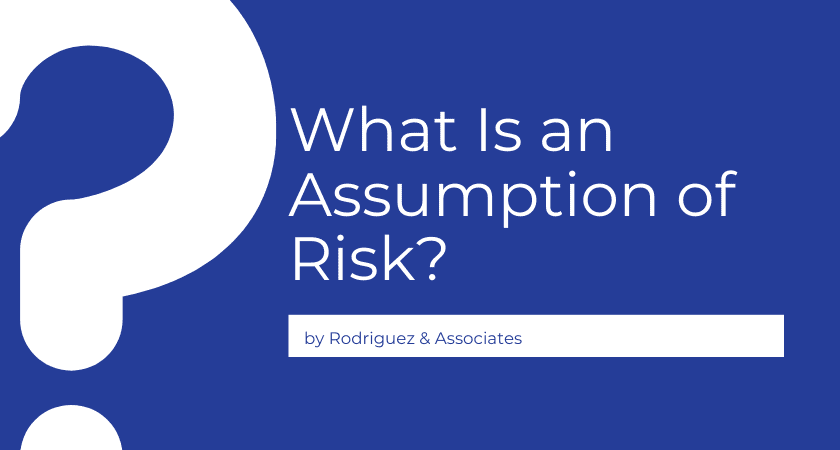When you file a personal injury lawsuit in Bakersfield, the person you are holding liable in your case will try to develop certain defenses to deflect the blame away from him or her and place it on you. One common strategy that defense lawyers use in personal injury cases is the assumption of risk, which states that you understood the risks associated with the negligent actions of the at-fault party.
While facing an assumption of risk argument can be nerve-wracking, you can combat these claims. With an attorney on your side, you can defend yourself against this argument and prove the at-fault party’s negligence.
How to Prove Assumption of Risk
The goal of a personal injury case is for you to prove that the at-fault party in your claim acted in negligence at the time of your accident, leading to your injuries. To prove negligence, you will need to supply evidence to prove the following statements.
- The at-fault party owed you a duty of care at the time of the accident.
- The at-fault party breached his or her duty of care.
- The breach of care directly caused your injuries.
- You suffered damages as a result of these injuries.
To defend himself or herself against these claims, the at-fault party may use the assumption of risk strategy to prove that you were aware of the risks associated with the accident, and you knowingly and voluntarily assumed a risk of harm. If you assumed the risk of injury at the time, the at-fault party does not have to pay for your damages.
To prove your assumption of risk, the at-fault party must prove the following elements.
- You had actual knowledge of the risk associated with the activity.
- You either expressly or implicitly assume the risk associated with the activity.
Express Assumption versus Implied Assumption of Risk
There are two types of assumption of risk: express assumption and implied assumption.
- Express assumption of risk involves an explicit agreement between you and the at-fault party that acknowledges your knowledge and acceptance of the risk. Usually, this is a written contract or agreement.
- Implied assumption of risk occurs when you accept and acknowledge the risk through words or conduct. For example, if the at-fault party tells you that he or she has broken stairs and you nod in acknowledgment, you implicitly assume the risk. If you later file a lawsuit after suffering an injury on those stairs, the at-fault party can use this evidence against you.
Express assumption is typically easier to prove than an implied assumption, but implied assumption can also be very broad and apply to a wide range of actions and statements. There are certain instances where you waive your implied assumption of risk due to factors outside of your control, such as criminal activity, unforeseeable events, and actions that may seem voluntary but are actually involuntary under the circumstances.
Defending Yourself Against Assumption of Risk
Facing an assumption of risk claim can be daunting, but you can defend yourself against this strategy. However, you will need an attorney on your side who can evaluate your accident, investigate the evidence surrounding the accident, and determine how to best approach your counterargument.
Hiring a personal injury attorney to represent your claim is one of the strongest ways you can defend yourself against assumption of risk and protect your right to compensation. If you have not done so already, contact a Bakersfield injury lawyer as soon as possible to discuss your claim and develop your case strategy.
